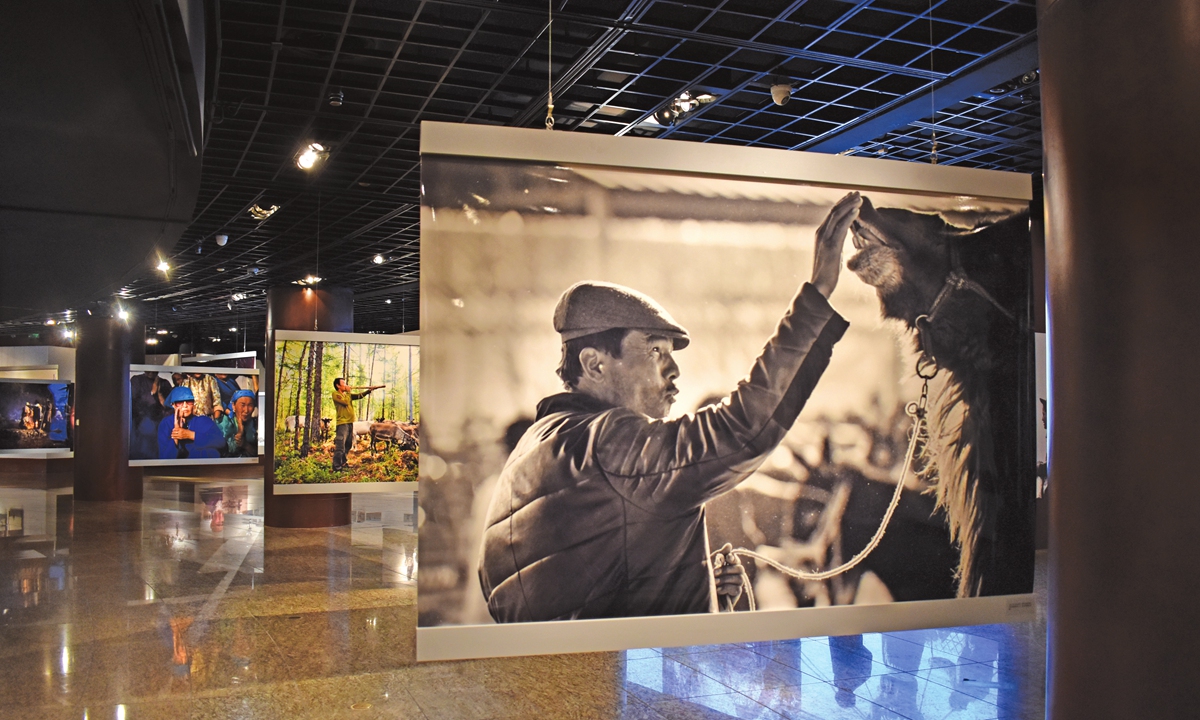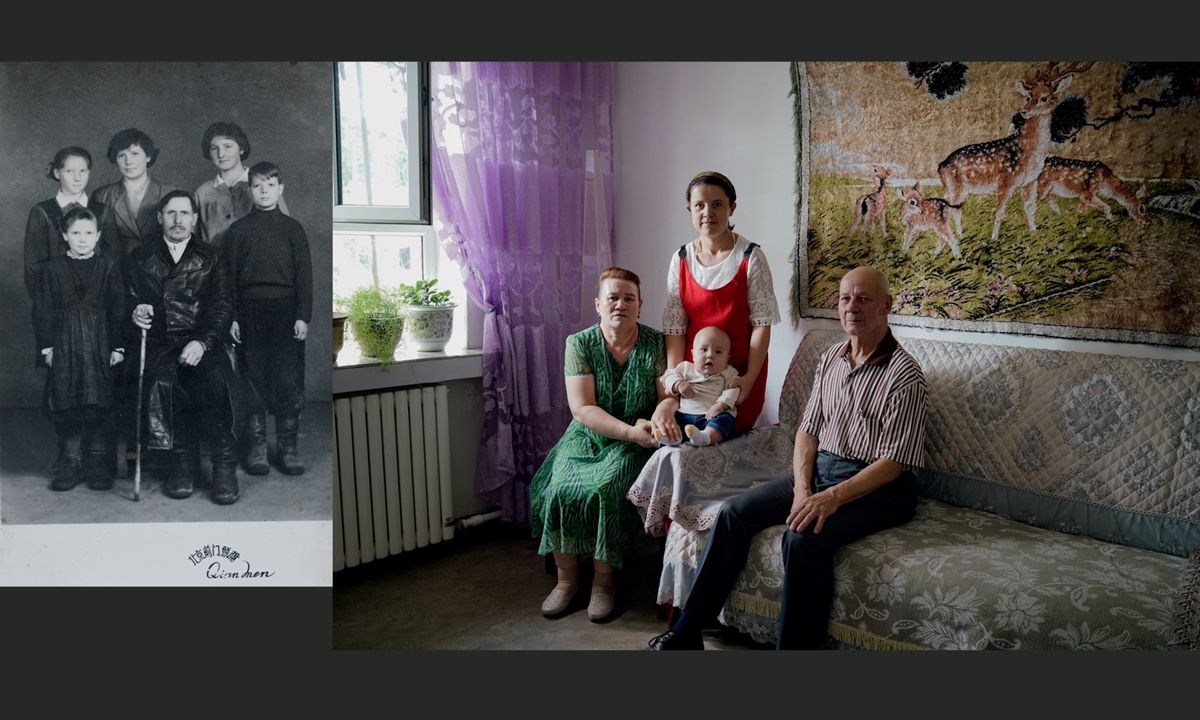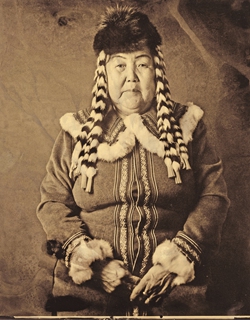Chinese ethnographic photo biennale debuts in Beijing
By Chen Xi Source: Global Times Published: 2020/10/14 18:38:40

The Third Chinese Visual Ethnographic Photo Biennale Photo: Chen Xi/GT
Entering the hall for the Third Chinese Visual Ethnographic Photo Biennale exhibition, a large number of various faces captured in photos come into view. These are not merely photos but a kind of platform for telling people about the stories and customs of China's many ethnic minority groups.Zheng Qian, deputy curator of Beijing's Chinese National Museum of Ethnology, told the Global Times that these photos show the true face of China's ethnic minority people and tell the world real Chinese stories by providing a complete image of the Chinese nation.
The event is part of the larger Photo Beijing 2020 exhibition, which debuted at Beijing's China Millennium Monument on Sunday.
A total of 1,944 photo series showcasing more than 30 of China's 55 ethnic minority groups are on show at the biennale, with 251 of the photos entering the museum's permanent collection.
Preservation and acceptance
The theme of 2020's biennale, "preservation and acceptance," reflects the current situation of most ethnic minority groups in China and is fully depicted through the photos at the exhibition.
"Preserving traditional customs and habits while accepting other cultures is a beneficial lifestyle for people from ethnic minority groups today," Zheng said, going on to point out that the selected photos are a good fit for the three criteria for the museum's collection: truth, integrity and beauty.
"Most photos were taken over a long period. The longest series took the photographer 30 years. All the stories showcased in the photos really happened, and the photographers themselves were the witnesses."
Photographer Wang Qing, who grew up in Northwest China's Xinjiang Uygur Autonomous Region, photographed a set of photos about ethnic Russians living in the region.
She told the Global Times that she found it very interesting when she learned that China's ethnic minority groups included ethnic Russians whose families had crossed the border from Russia to China since the mid -19th century.

A photo of an ethnic Russian family taken by photographer Wang Qing Photo: Courtesy of the Chinese National Museum of Ethnology
Wang spent four years finishing her photography series, during which time she built a deep friendship with several families. After carrying out a survey, she found that four of the families were the only remaining members of pure Russian descent in the city of Yining in Xinjiang. The four families formed the first part of her photo series by showcasing their collection of cultural relics and family documents and interpreting the ethnic group's migration history and beliefs.The second part is comprised of portraits of the second, third, and fourth generations of descendants from the intermarriage between Russians and other Chinese ethnic groups, with the goal of recording the evolution of an ethnic group with a relatively small population.
Responsibility of recording
Like many photographers, Wang Qing said she feels it is her responsibility to record these ethnic groups to allow more people to understand them better.
Similarly, photographer Wang Wei started photographing a branch of Ewenki, one of China's ethnic minority groups who mainly make a living by hunting and raising reindeer in the dense forests of Daxinganling in North China's Inner Mongolia Autonomous Region and Northeast China's Heilongjiang Province.

A photo of an Ewenki woman taken by photographer Wang Wei Photo: Courtesy of the Chinese National Museum of Ethnology
He told the Global Times that he hopes the photos he took will contribute to the historical record of a lesser-known ethnic group and allow more people to support them since their lifestyle is in danger of becoming obsolete.According to Wang Wei, only 34 people in the ethnic group are of pure descent according to genetic sequence research conducted by China's National Health Commission in 2017.
Wang Wei spent a lot of time communicating and building trust with these 34 individuals, choosing to finally use a style of classical photography to finish their portrait collection.
"I want to keep recording their life under my lens. I feel it has become a duty for me as a photographer to fill that part of history," he said.
Zheng echoed Wang Wei's view that the Chinese Visual Ethnographic Photo Biennale is not just a photography exhibition, but also is carrier of the memories of the Chinese nation and a valuable resource for future generations to learn about history.
"Each picture serves as a certain historical memory, stitched together to form a complete Chinese nation."
Meanwhile, Zheng expressed her hope that the exhibition could enter the world stage through exchange opportunities with museums overseas.
She noted that ethnographic photography as an internationally universal academic tool can directly and honestly showcase the real lives of Chinese people.
"Those who have never been to China will know what the real Xinjiang Uygur Autonomous Region and Tibet Autonomous Region look like and how the locals live there."
Sun Haoran contributed to this story
Newspaper headline: Faces of history